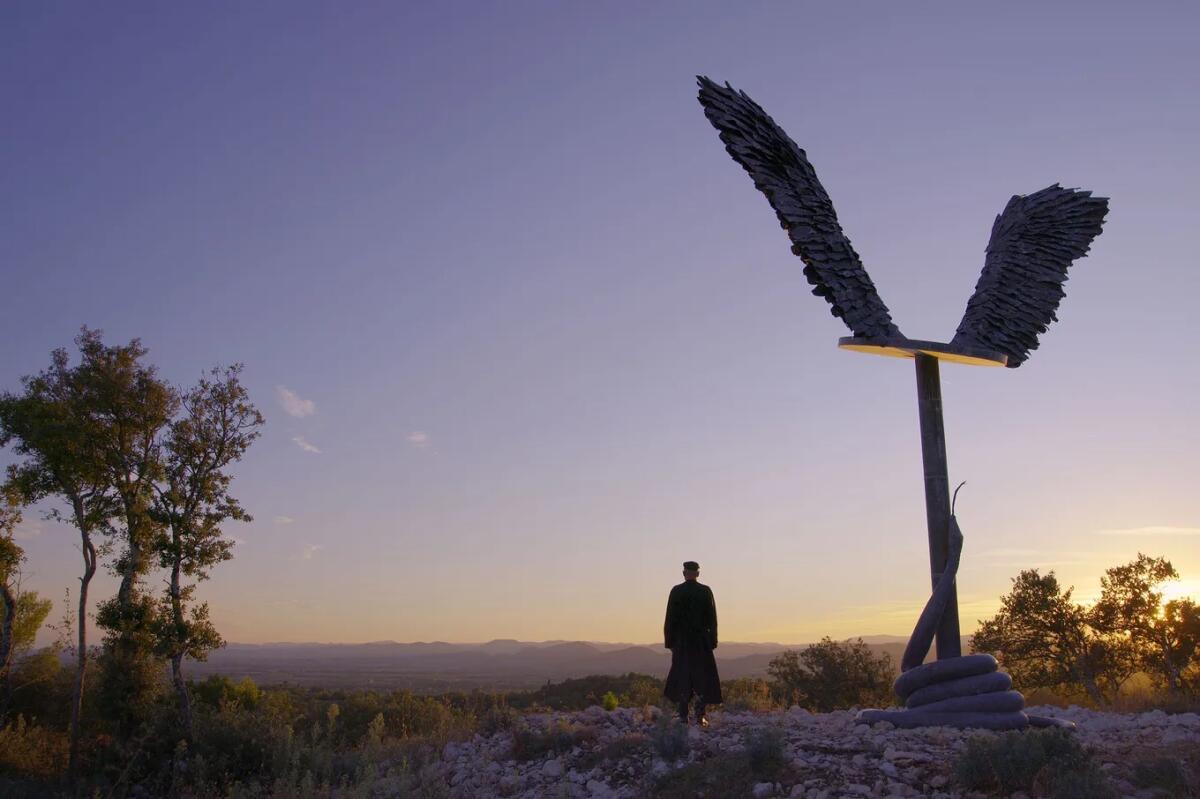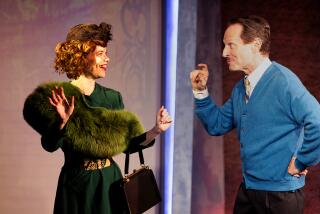In ‘Anselm,’ an artist of monumental scope comes to intimate life via 3-D

- Share via
All his life, the churn of history has spoken to 78-year-old Anselm Kiefer, who has responded with imposingly environmental, mythic and beautiful paintings and sculptures that get at something intrinsic about postwar Germany’s hard relationship with its past.
His born-in-the-same-year countryman, filmmaker Wim Wenders (“Paris, Texas,” “Wings of Desire”), is no slouch either with a canvas of complex humanity. For his new documentary, “Anselm,” the director has fashioned a mesmerizing engagement with Kiefer’s art, including just enough face time with the subject to elevate the work’s immersive, bleak majesty, rather than give it an aggrandizing spin. The result is also one of the year’s most memorable theatrical experiences, because it’s Wenders’ return to 3-D (after 2011’s “Pina”), proving again how versatile and intimate the format can be when skillfully applied outside the genre of blockbusters.
A child of World War II’s rubble and ruin, Kiefer fostered a sensibility about history designed to provoke those who would quickly forget (as with his controversial “Heroic Symbols” photographs from 1969 depicting the Nazi Sieg Heil salute). His art, dense with paint, ash, straw and lead, regularly stunned — a bridge between the spiritual and the earthen. As he evolved from pushing German audiences, his work grew in scale and scope (and stature) to take on the many ways humans wrestle with destruction and renewal, blending elements of science, alchemy, mysticism and philosophy.
Wenders, who filmed “Anselm” over two years, is both an awe-inspired visitor and a respectful exhibitor. He opens with a hushed sunrise wander among striking bridal-gowned figures with symbols for heads that represent a hidden history of women’s unrecognized power — what we soon realize is one of many installations at a 200-acre site in Barjac, France, that Kiefer transformed over 30 years into a landscape of artistic ambition. (He’d done something similar earlier in his career using a brick factory in Germany.)

When we first see the bald, black-T-shirted Kiefer, it’s in his latest cavernous workspace outside of Paris, bicycling and whistling among paintings of spectacular scale and heaviness, like a strange little town’s most dedicated citizen. Wenders preps us for the impact of his work, whether it’s one of Kiefer’s immense scorched topographies or his libraries of lead books, or the painting depicting him lying, corpse-like, under a star-encrusted night sky.
A lot of documentaries about artists are content to be little more than celebratory slide shows, broken up by interviews and behind-the-scenes footage. “Anselm,” fluid and magical as it roams and inspects Kiefer’s artwork, is that rarity: itself a stimulating creation, centering an engagement with the pieces. Along with some re-creations (Kiefer’s son plays his father as a young man; Wenders’ grandnephew plays him as a boy), spoken interludes (Jewish poet Paul Celan being a sacred influence) and insights from Kiefer himself, “Anselm” coalesces via Maxine Goedicke’s skillful editing into its own one-of-a-kind retrospective.
The 3-D, meanwhile, feels organic, not gimmicky. If you’ve seen Wenders’ dazzling tribute to dancer-choreographer Pina Bausch, it shouldn’t surprise that he’s no less sublime matching the textural language of 3-D to an art installation, standing right next to Kiefer in his studio as straw is fire-blasted, molten lead is poured and paint is applied. With Wenders occasionally layering in an artful element — archival interviews playing on an old TV set — the mobile cinematography sows a perspective-driven frame of mind. You’ll feel small watching “Anselm.” But also, in that significant tug aroused by Kiefer’s art, somehow lifted.
'Anselm'
Not rated
In German and English, with English subtitles
Running time: 1 hour, 33 minutes
Playing: AMC Santa Monica 7; Laemmle Glendale
More to Read
Only good movies
Get the Indie Focus newsletter, Mark Olsen's weekly guide to the world of cinema.
You may occasionally receive promotional content from the Los Angeles Times.










